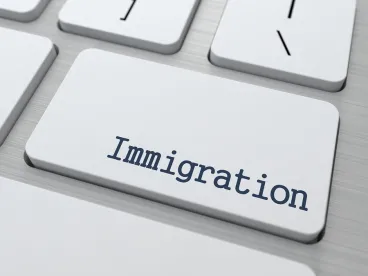International companies rely on L visas to transfer managers, executives, and specialized knowledge employees to the United States. But the Department of State is changing the standards it uses to adjudicate those visas, making transfers more difficult.
L-1 visas are available to a company with a parent/subsidiary, affiliate, or branch office overseas that wishes to transfer an employee to a parent/subsidiary, affiliate, or branch office in the United States. The L-1A is for qualified executives and managers. The L-1B is for transfers of individuals with “specialized knowledge.”
Generally, applying for an L-1 is a two-step process involving filing a petition with USCIS and then, upon approval, an application for the L-1 visa at a U.S. Embassy or Consulate abroad.
With current USCIS processing times, ranging from two to nine months, and the suspension of premium processing, transferring an employee from abroad can take some time. Steadily climbing Requests for Information (RFEs) and denial rates constitute further hurdles.
Qualifying multinational organizations have been able to skip the preliminary petition process with USCIS under the Blanket L visa procedure. Those organizations must establish to USCIS’ satisfaction that they have the required intracompany relationship in advance. To do that, the organizations must prove that they:
- Are engaged in commercial trade or services;
- Have an office in the U.S. that has been doing business for at least one year;
- Have at least three domestic and foreign branches, subsidiaries, and/or affiliates; and
- Have transferred at least 10 individuals in L-1 status during the 12 months before filing or have subsidiaries or affiliates with combined annual sales of at least $25 million or have a U.S. workforce of at least 1,000 employees.
Blanket L beneficiaries apply for L-1 visas directly at a consulate abroad without any prior filing or approval from USCIS. Companies use the blanket process, if they qualify, because it is more efficient, less expensive, and the beneficiaries have a brief opportunity to argue their case if the Consular Officer has questions. The approval rates have tended, anecdotally, to be higher than the approval rates at USCIS.
But that has changed. In October 2019, the Department of State (DOS) launched a “test balloon” by heightening the adjudication standard for L visas. DOS changed the standard of review in the Foreign Affairs Manual (FAM) from “the preponderance of the evidence” to a “clear and convincing” standard. But that apparently hit a glitch and the change was removed, without any fanfare, the next month. Nevertheless, the standard appears to be getting tougher. Denials from the Consulates are more frequent – especially in India.
Finally, on March 30, 2020, the FAM was updated again. This time, it sets out an even more stringent standard for Blanket L petitions – if the Consular Officer has “any doubt,” the application must be denied.
The FAM advises officers, among other things, that they must:
- Be particularly careful because the Blanket L interview “is the only time in the petition and visa process during which a U.S. government representative will interact with the applicant”;
- Watch out for exaggerations and misrepresentations regarding qualifications; and
- Be aware that if questions cannot be quickly resolved at the interview, denial is proper.
During the current COVID-19 crisis, U.S. Consulates abroad are not open for routine visa processing. But this may be a time to prepare by gathering documentation necessary to meet the new standards and to possibly apply for Blanket L certification.




 />i
/>i

